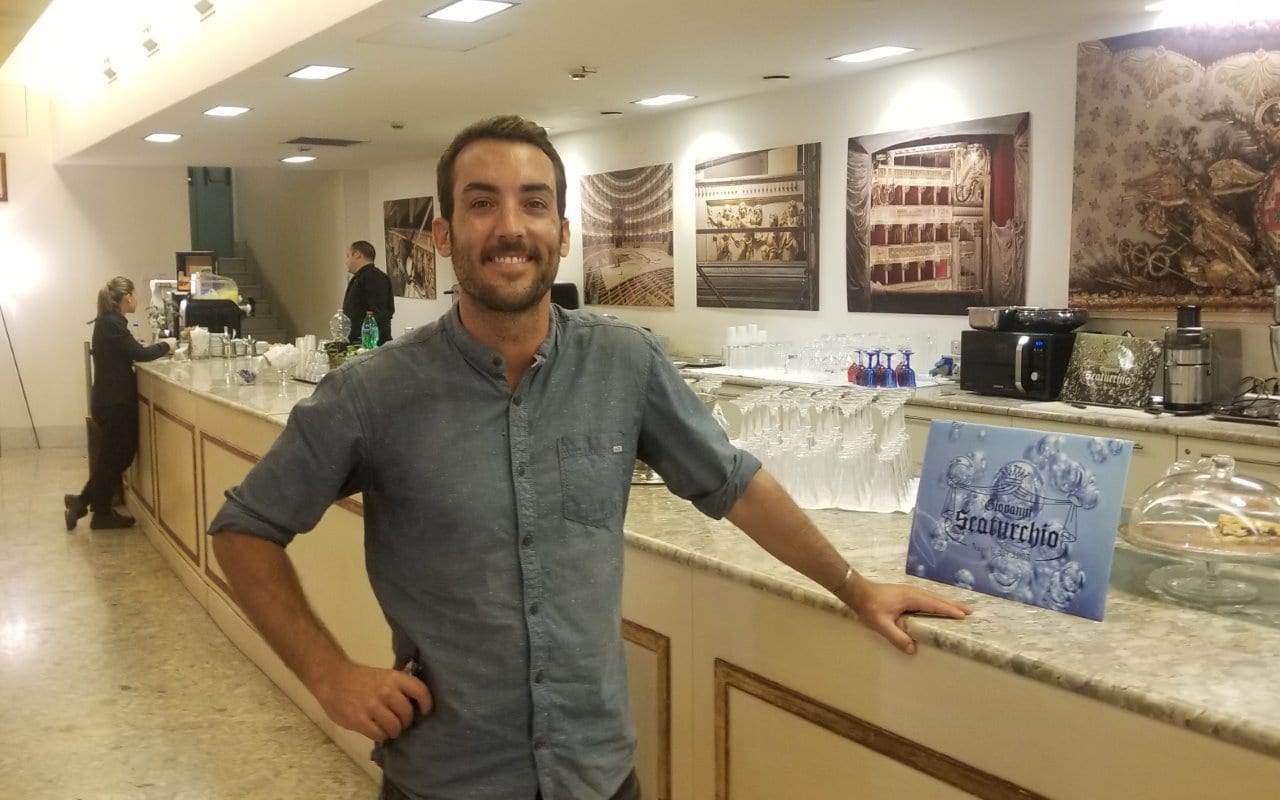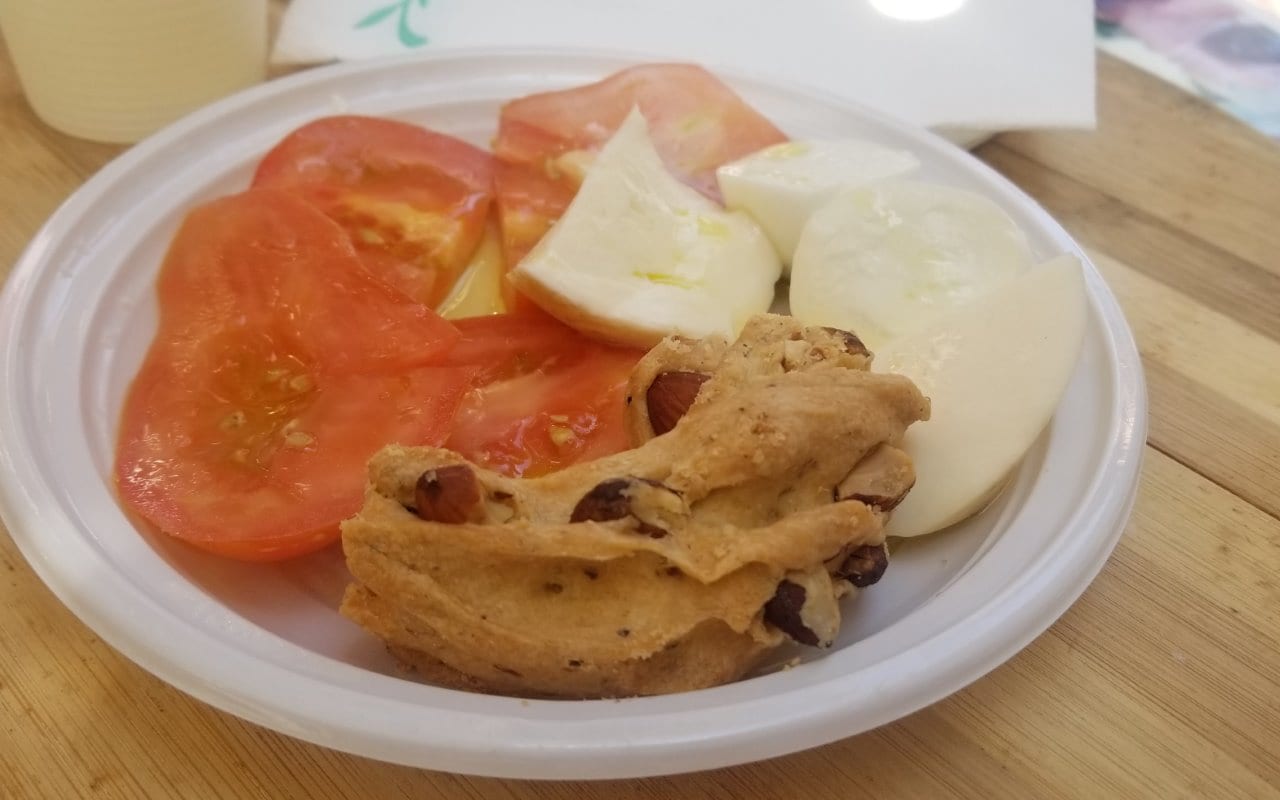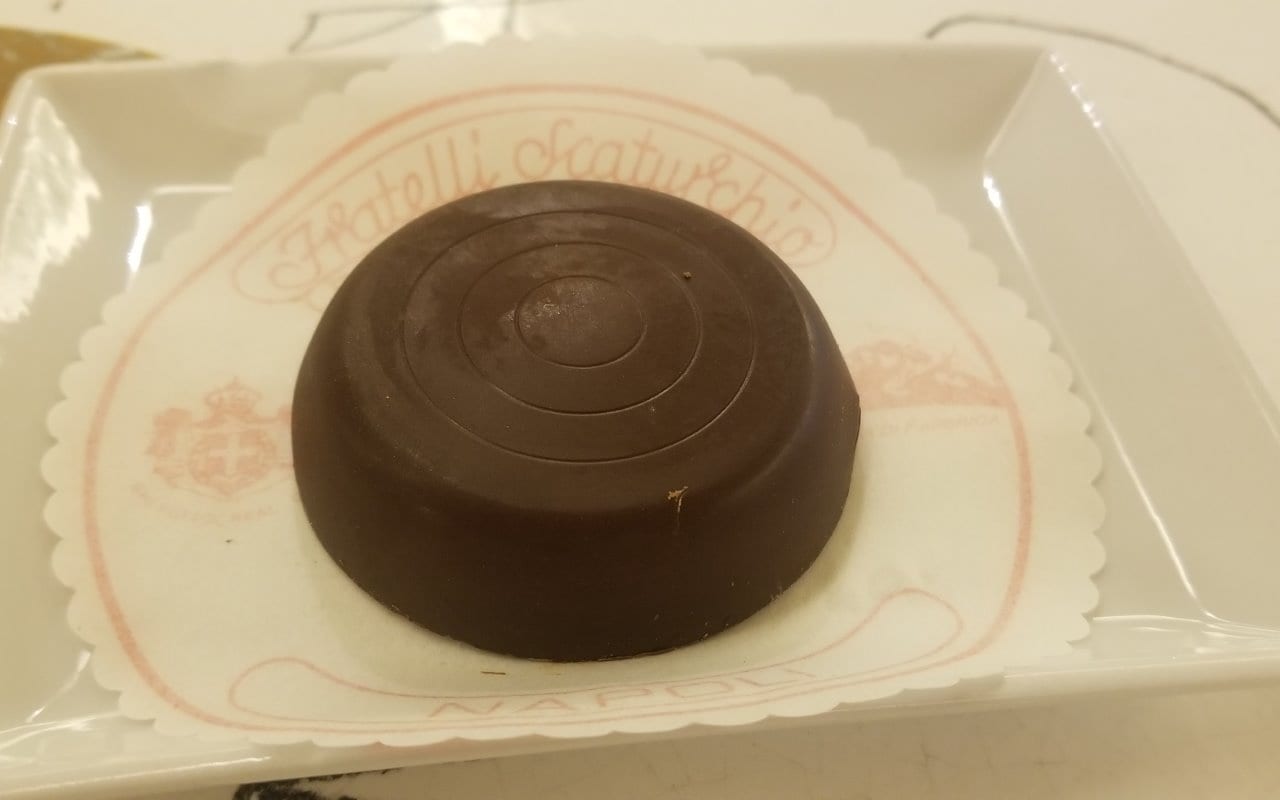
24 Sep Eating Europe: Food Tour of Naples, Italy
Throughout Italy, the food is delicious. And what makes Italy so unique as a country is that each region, and in some cases individual towns within a region, has their own specialties. There are regional pastas, pastries and chocolates, as well as regional recipes. Each time I head to a new town in Italy, I seek out these regional specialties and when I was heading to Naples, that was no exception.
When one thinks of Naples, pizza is what comes to mind. Pizza is the most popular and best known creation of all Neapolitan cuisine. Naples is also known for its cheeses, especially mozzarella di bufala, and the fresh ripe tomatoes. But there are also the pastries, such as the babà (a rum cake), sfogliatella and zeppole. And there are the meats, seafood, vegetables and pastas and their various preparations.
When heading to Naples for two days, how would I ever know what to try and where to try it? Naples is 1/11 the size of Rome but it is 1/3 of the population making it the densest city and the third largest in Italy. When it came to pizza, I had done my research and had a plan. But, I had no idea what else I should be looking to try or where to go. So, as a fan of food tours, I looked for one in Naples. As I have written before, food is a cultural identifier and it is shaped by location and by history. A food tour is a wonderful way to learn about a city and its culture, and it tastes good.
The food tour organizer in Naples was Eating Europe. Founded in Rome in 2011 by American Kenny Dunn, Eating Europe has grown to be one of the largest food tour operators in Europe. They operate in nine cities, offering intimate experiences of a neighborhood and its food.
My host for my Naples tour was Francesco Pasqualotto. Francesco is originally from Tuscany but fell in love with Naples the first time he visited. Having worked with Eating Europe in Rome for a number of years, he aspired to start a tour in Naples. He moved to Naples one year ago and created the Naples tour which launched this summer. I was excited to be one of the first to go on the tour and it did not disappoint. Francesco’s passion for the city was infectious and I could not get enough!
We met at the Galleria Umberto, a shopping arcade built between 1887–1891. It has been renovated and is a magnificent structure. It is built in the shape of an X with a large central meeting area in the center. The glass ceilings are high and the floors marble and it is reminiscent of the Galleria in Milano.
The first stop on the tour was to Sfogliatella Mary, located in the Galleria Umberto. Sfogliatella, which means “small, thin leaf/layer”, comes in two styles in Naples. The “sfogliatella riccia” (“curly”) is the “normal” version and is made with filo dough and looks like stacked leaves. The “sfogliatella frolla” used shortbread dough and does not form with the same layers. The pasty is then filled with different fillings, such as orange-flavored ricotta, almond paste and candied peel of citron.
As I had tried a sfogliatella riccia in Sorrento, I decided to try the sfogliatella frolla. It was served warm and was filled with ricotta, cinnamon, sugar and orange peel. For such a small pastry, it was dense and rich.
Our next stop was at Passione di Sofi where I tried a typical Italian street food item – frittatina di pasta (deep fried pasta). Francesco told me the Naples legend of Sofi. King Ferdinand of Spain fell in love with a poor girl and loved the food of the “poor”. Fittatina di pasta is one of these dishes.
The frittatina di pasta is made from the left over pasta, peas, ragu and bechamel and then it is fried (or baked). This is a very tasty snack and could also be considered the perfect hang-over food.
We continued wandering through an open-air market.
And we stopped at Salumeria Rognoni, a small shop selling cheeses, meats and other products.
Here we tasted mozzarella di bufala, some fresh tomatoes and taralli napoletani, a hard bread made from left over dough, pepper, almonds and lard and then twisted and baked until hard. The mozzarella di bufala was so flavorful and I was told that the best way to eat it is plain with nothing else. All of this was washed down with a refreshing white wine.
Our next stop was for pizza, of course! But instead of going to one of the famous places that people line up for, we went to ‘Ntretella. Located in an abandoned saw mill in the Spanish Quarter, the restaurant was opened three years ago by Rino Artigiano and his sister Maria Rosaria.
We ordered the classic Margherita pizza, which is the colors of the Italian flag – mozzarella (white), tomato (red) and basil (green). The Margherita pizza was created in 1889 to honor the queen Margherita of Savoy and is made with tomatoes, fior di latte and basil. Fior di latte is the typical cheese used for pizza in Naples, not mozzarella di bufala. Mozzarella di bufala gets dry when it is cooked, losing water and making the pizza wet. Fior di latte is mozzarella made from cow’s milk and it melts perfectly.

After so much eating, our last stop was at Scaturchio Opera House for an espresso…and dessert. The opera house was opened in 1737 and is the oldest active opera in the world. An underground space was created, leading from the Royal Palace to the opera house and today it is a pastry shop, the oldest in the Naples city center.
Fratelli Scaturchio has a special pastry called the Ministeriale, named for the bureaucracy. This pastry was created by Scaturchio for an actress that he loved and is a chocolate hazelnut shell filled with ricotta and rum.
My food tour of Naples with Eating Europe centered around the old city center of Naples and gave me a good sampling of some of the delicious food made in Naples. As the food is on the heavier side, I was happy that this tour only had five stops. Francesco was such a personable and passionate guide and even after the tour was over, he and I continued to talk and he walked around a bit more with me, offering suggestions of other places to go.
Should you find yourself in Naples, or one of the other cities Eating Europe is in, I would highly recommend their food tours. Such a fun and filling way to see a city and Francesco’s passion for Naples was so contagious that I cannot wait until I can go back and explore more!
Discover more from Please The Palate
Subscribe to get the latest posts sent to your email.















